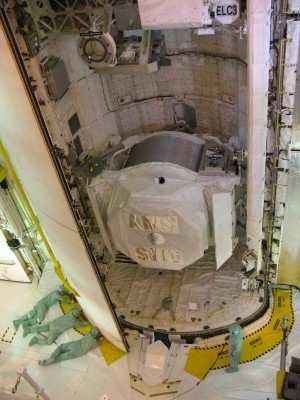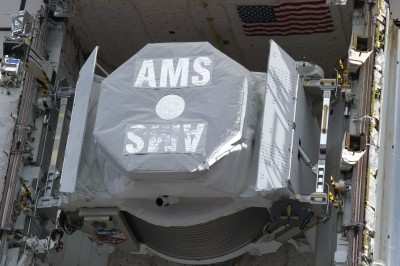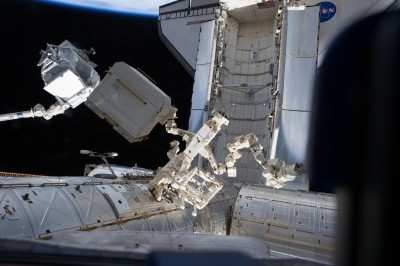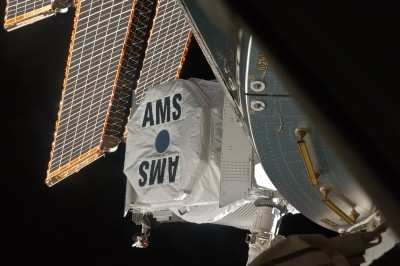Wed, May 25, 2011
Over 500 Scientists From 16 Countries Developed The Device
Four days after launching aboard space shuttle Endeavour, the
Alpha Magnetic Spectrometer (AMS-02) has been successfully
installed on the International Space Station (ISS). The AMS-02 is a
state-of-the-art particle physics detector designed to operate as
an external module on the International Space Station. It will use
the unique environment of space to study the universe and its
origin by searching for antimatter and dark matter

The AMS-02 contains sensors that measure cosmic radiation and
detect dark matter or antimatter. The sensors should function well
for at least ten years and are maintained at a fixed temperature.
To ensure equitable temperature conditions, a highly advanced
cooling system was developed based on two-stage CO2 cooling. The
instrument, which was developed by a team of some 500 scientists
hailing from 56 scientific institutes in 16 countries, was
transported to ISS aboard space shuttle Endeavour in its final
flight.

The Alpha Magnetic Spectrometer - 02 (AMS-02) is a
state-of-the-art particle physics detector constructed, tested and
operated by an international team. The AMS-02 uses the unique
environment of space to advance knowledge of the universe and lead
to the understanding of the universe's origin by searching for
antimatter, dark matter and measuring cosmic rays.
NASA says the AMS-02 will provide a plethora of cosmic ray data
that will help to advance and perhaps redefine much of what we know
about the Low Earth Orbit space radiation environment.

This unique scientific mission of exploration seeks to
understand fundamental issues shared by physics, astrophysics and
cosmology on the origin and structure of the universe. Although the
AMS-02 is specifically looking for antimatter and dark matter, as
the largest magnetic spectrometer in space, AMS-02 has and will
collect information from cosmic sources emanating from stars and
galaxies millions of light years beyond the Milky Way.

The instrument is reportedly operating normally, and has
reportedly already tracked its first particles from ISS.
More News
Back-Taxi A term used by air traffic controllers to taxi an aircraft on the runway opposite to the traffic flow. The aircraft may be instructed to back-taxi to the beginning of the>[...]
“Our WAI members across the nation are grateful for the service and sacrifice of the formidable group of WASP who served so honorably during World War II. This group of brave>[...]
“Many aspiring pilots fall short of their goal due to the cost of flight training, so EAA working with the Ray Foundation helps relieve some of the financial pressure and mak>[...]
Blind Speed The rate of departure or closing of a target relative to the radar antenna at which cancellation of the primary radar target by moving target indicator (MTI) circuits i>[...]
Aero Linx: International Airline Medical Association (IAMA) The International Airline Medical Association, formerly known as the Airline Medical Directors Association (AMDA) was fo>[...]
 ANN's Daily Aero-Term (05.19.24): Back-Taxi
ANN's Daily Aero-Term (05.19.24): Back-Taxi Aero-News: Quote of the Day (05.19.24)
Aero-News: Quote of the Day (05.19.24) Aero-News: Quote of the Day (05.20.24)
Aero-News: Quote of the Day (05.20.24) ANN's Daily Aero-Term (05.20.24): Blind Speed
ANN's Daily Aero-Term (05.20.24): Blind Speed ANN's Daily Aero-Linx (05.20.24)
ANN's Daily Aero-Linx (05.20.24)






